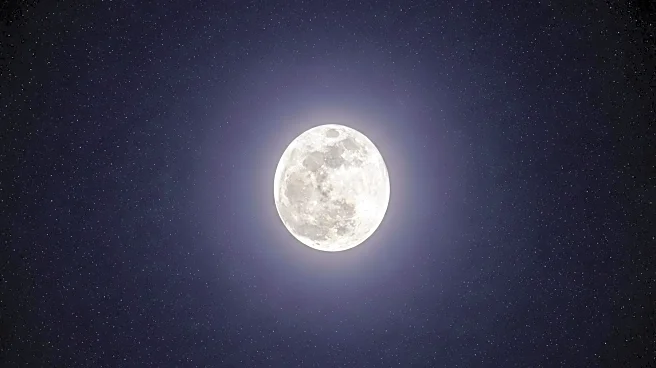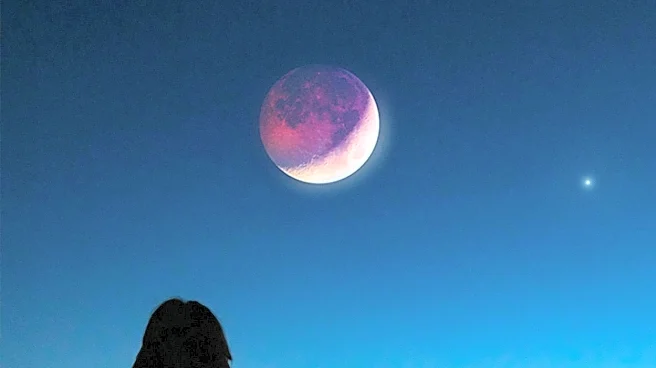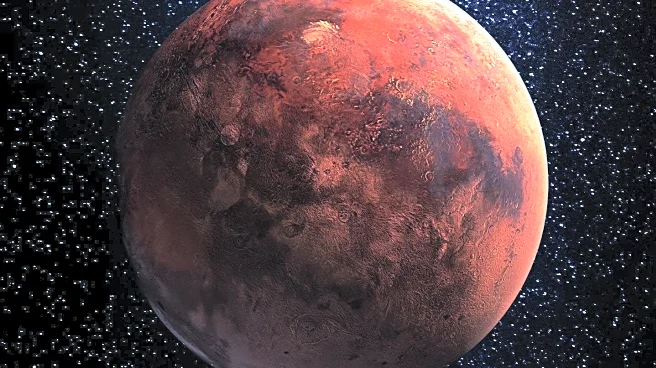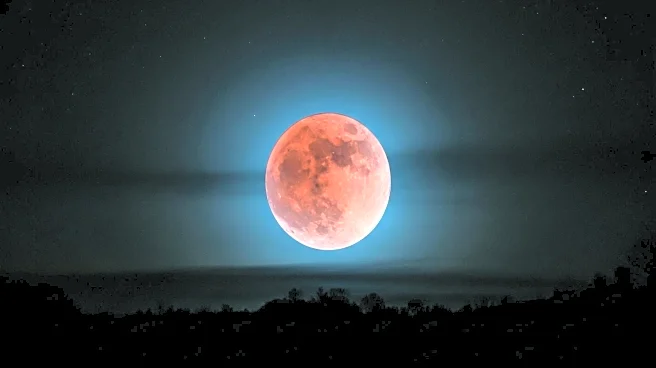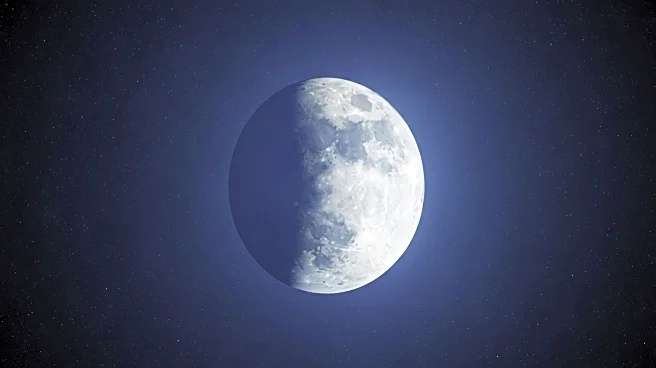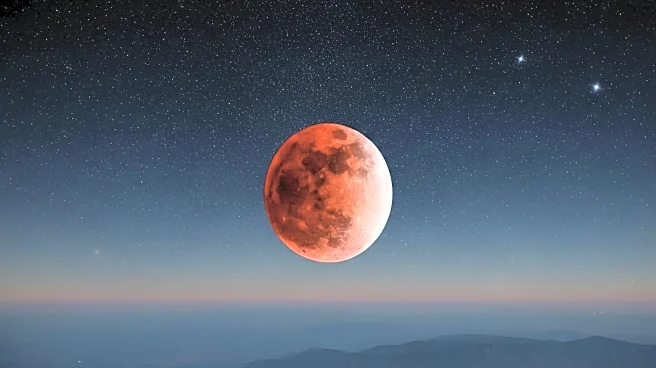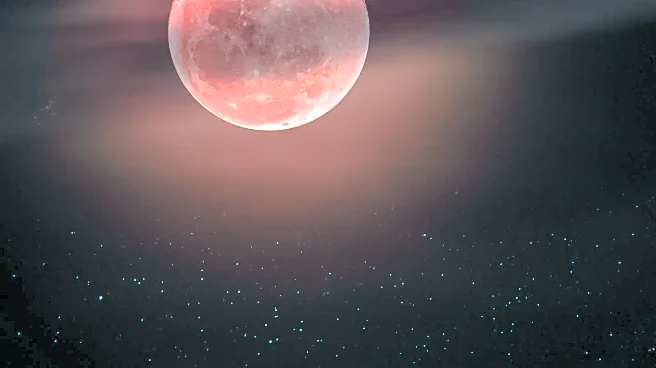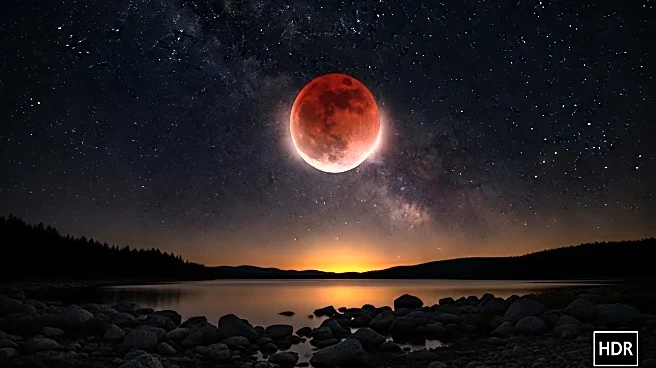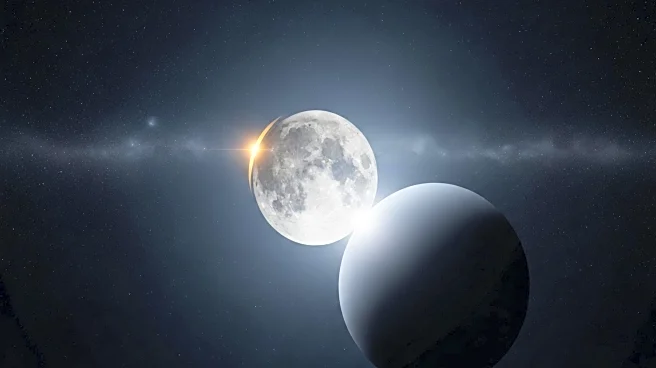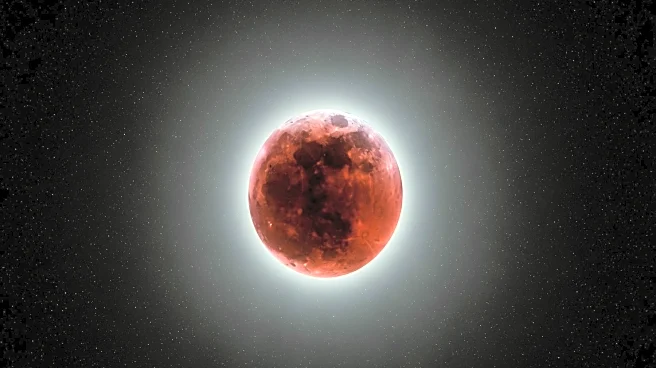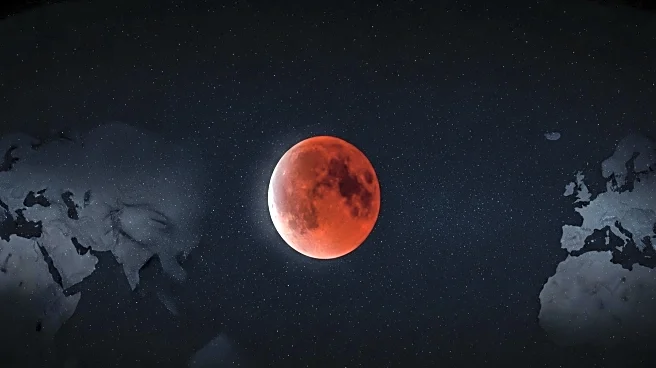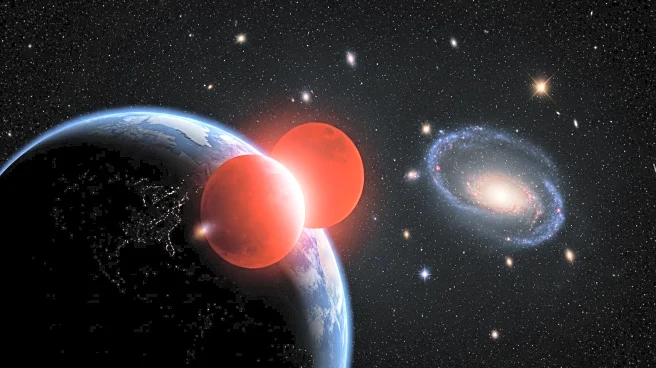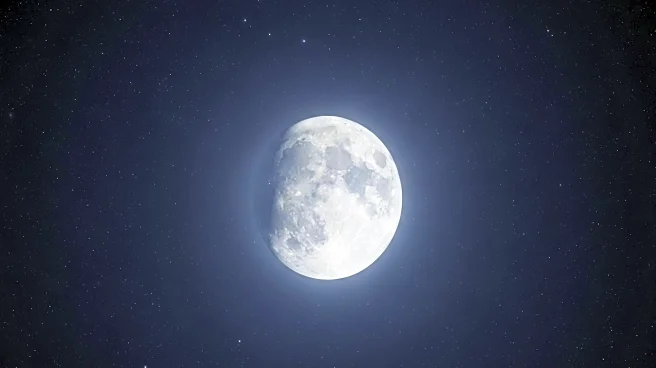What is the story about?
What's Happening?
On September 7, 2025, skywatchers will witness the Full Corn Moon, which coincides with a total lunar eclipse. This celestial event will be visible from parts of Africa, Europe, Asia, and Australia, with partial visibility extending to North America. The Full Moon, typically known as the Harvest Moon in September, will be called the Corn Moon this year due to the timing of the autumnal equinox. The eclipse will provide a spectacular view as the Moon passes through Earth's shadow, taking on a reddish hue. The event will be observable in the early morning and evening, with the Moon positioned near Saturn and Neptune.
Why It's Important?
The total lunar eclipse offers a unique opportunity for astronomical observation and public engagement with celestial phenomena. Such events are significant for both amateur and professional astronomers, providing data on lunar surface conditions and atmospheric effects. The widespread visibility of the eclipse allows a large portion of the global population to experience the event, fostering interest in astronomy and science education. Additionally, the alignment of the Full Moon with Saturn and Neptune presents a rare chance to observe these celestial bodies in close proximity.
What's Next?
Following the eclipse, the Moon will continue its trajectory, passing north of Saturn and Neptune. Observers are encouraged to take advantage of the clear skies to view these planets. Astronomy enthusiasts can look forward to future celestial events, such as the October Harvest Moon, which will be the closest Full Moon to the autumnal equinox. The ongoing observation of lunar and planetary movements will continue to provide valuable insights into our solar system.
AI Generated Content
Do you find this article useful?
